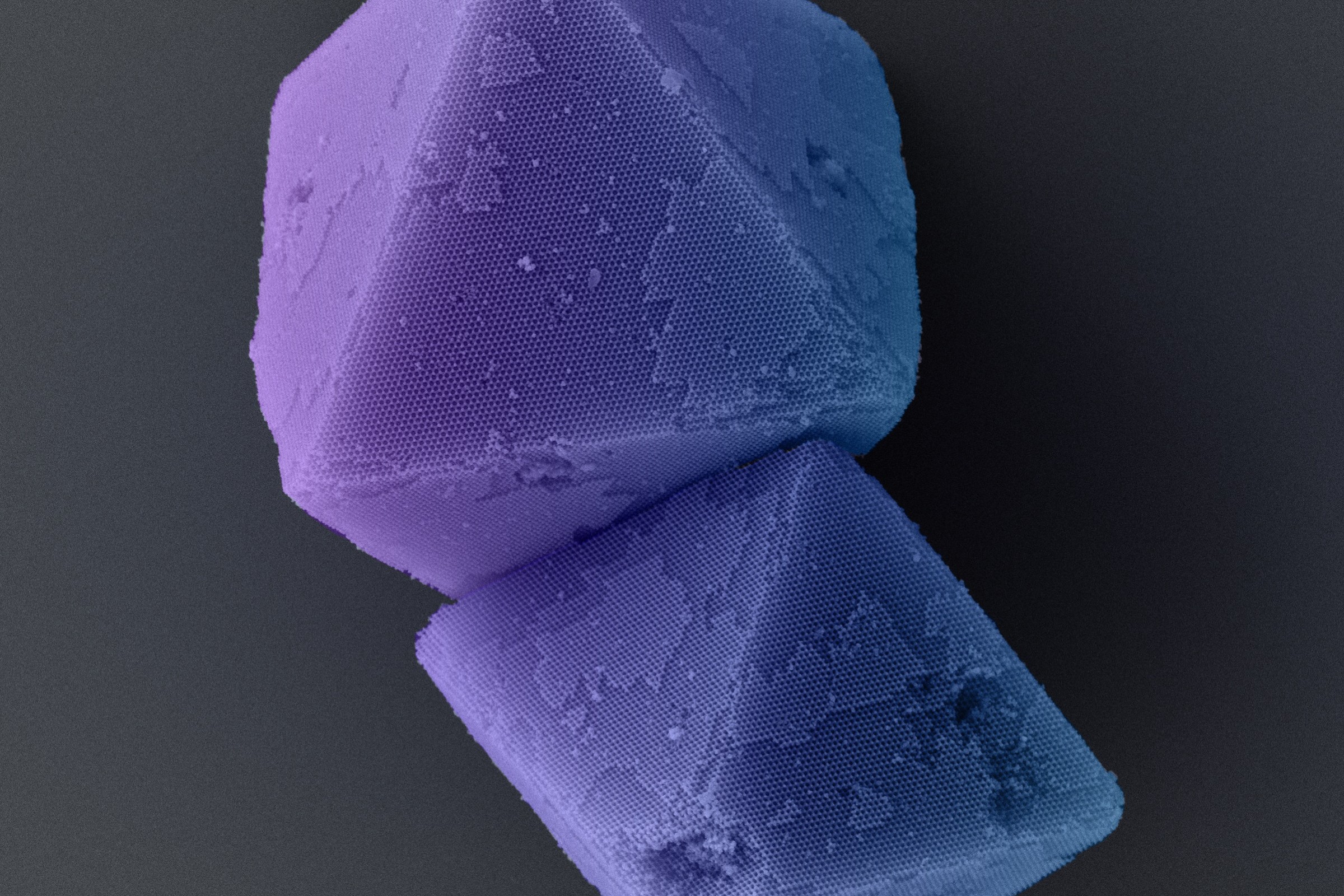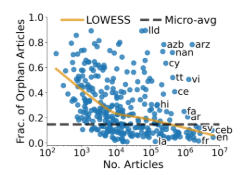2024-05-17 ミュンヘン大学(LMU)
 Diamond crystals made from DNA, electron microscope image, color-enhanced. | © Liedl Lab
Diamond crystals made from DNA, electron microscope image, color-enhanced. | © Liedl Lab
<関連情報>
- https://www.lmu.de/en/newsroom/news-overview/news/diamond-glitter-a-play-of-colors-with-artificial-dna-crystals.html
- https://www.science.org/doi/10.1126/science.adl2733
DNA折り紙からダイヤモンド格子フォトニック結晶を構築 Diamond-lattice photonic crystals assembled from DNA origami
GREGOR POSNJAK, XIN YIN, PAUL BUTLER, OLIVER BIENEK, […], AND TIM LIEDL
Science Published:16 May 2024
DOI:https://doi.org/10.1126/science.adl2733
Editor’s summary
Diamond lattices can generate a complete three-dimensional photonic band gap, but generally have been fabricated by lithography and exhibit infrared and near-infrared band gaps. Two studies now report DNA templating of lattices on a length scale that can create photonic band gaps at optical wavelengths (see the Perspective by Li and Mao). Posnjak et al. designed DNA origami that self-assembled into diamond lattices with a periodicity of 170 nanometers. After coating the surfaces with a high-dielectric material (titanium dioxide), a reflection corresponding to the photonic band gap was seen in the near ultraviolet. Liu et al. developed an inverse design strategy for creating pyrochlore lattices that can exhibit a large and omnidirectional band gap. This approach, which uses octahedral and icosahedral origami, avoids the formation of traps that interfere with the assembly process. —Phil Szuromi
Abstract
Colloidal self-assembly allows rational design of structures on the micrometer and submicrometer scale. One architecture that can generate complete three-dimensional photonic bandgaps is the diamond cubic lattice, which has remained difficult to realize at length scales comparable with the wavelength of visible or ultraviolet light. In this work, we demonstrate three-dimensional photonic crystals self-assembled from DNA origami that act as precisely programmable patchy colloids. Our DNA-based nanoscale tetrapods crystallize into a rod-connected diamond cubic lattice with a periodicity of 170 nanometers. This structure serves as a scaffold for atomic-layer deposition of high–refractive index materials such as titanium dioxide, yielding a tunable photonic bandgap in the near-ultraviolet.


